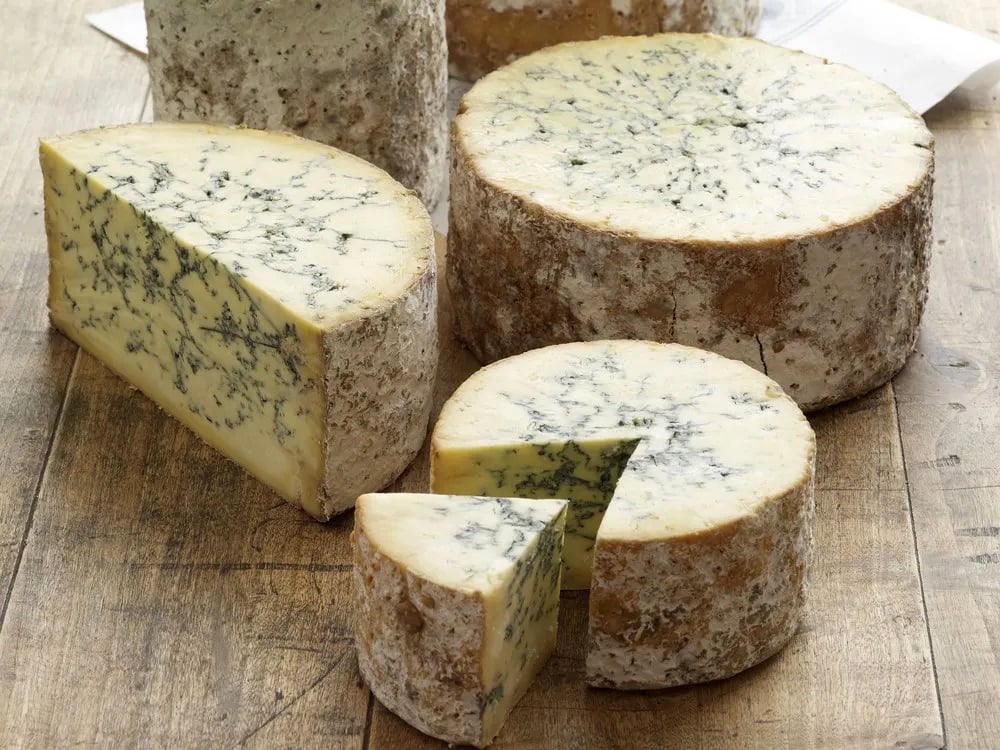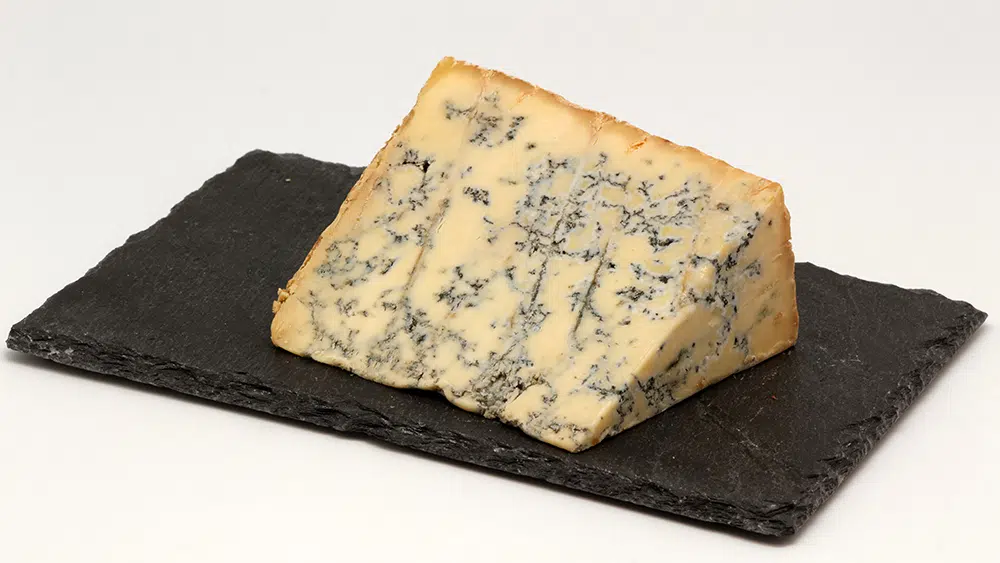When it comes to British cheese, few names carry as much prestige as Stilton. Often called the King of English cheeses, this creamy blue variety is steeped in history, tradition, and strict rules that protect its authenticity.
Only six dairies in England are licensed to make Stilton, all located in Derbyshire, Nottinghamshire, or Leicestershire. Four of these sit in the Vale of Belvoir, where centuries of cheesemaking expertise continue to shape every wheel.
A Heritage of Craftsmanship
Among the dairies still producing Stilton are some of England’s most celebrated names:
-
Colston Bassett Dairy, a cooperative founded in 1913 and still hand-ladling curds today.
-
Cropwell Bishop Creamery, run by the Skailes family since 1847.
-
Tuxford & Tebbutt, dating back to the 1780s.
-
Webster’s Dairy near Melton Mowbray.
-
Shirevale is a specialist in both Blue and White Stilton.
The newest innovation comes from Long Clawson Dairy, which has introduced its 1912 Artisan Stilton to mark the cooperative’s founding year. Made with milk from cows grazed for at least 180 days a year, it highlights the balance between tradition and modern taste.
Stilton for Today’s Table
While many see Stilton as a festive treat, cheesemakers want it to become a year-round favorite. Bill Mathieson, Managing Director of Long Clawson, believes there is untapped potential.
“Stilton is a national treasure,” he explains, “but most people only eat it at Christmas. We want it to be an everyday ingredient, perfect for cooking, snacking, and entertaining.”
With more than 60% of consumers already using cheese in recipes, there’s a clear opportunity for Stilton to grow beyond the cheeseboard.

From Village to National Treasure
Stilton’s story dates back to the late 1600s, when cream cheese was made in and around the Cambridgeshire village of Stilton. Records show that by 1726, cheeses weighed up to 18 pounds and were known for their rich, creamy flavor.
In 1724, writer Daniel Defoe described Stilton as “our English Parmesan”. Soon after, Cooper Thornhill, owner of The Bell Inn on the Great North Road, began selling it to stagecoach travelers, cementing its reputation. By 1743, he had partnered with cheesemaker Frances Pawlett of Leicestershire, helping to commercialize Stilton across England.
In 1966, the cheese was awarded a Certification Trademark, making it the only British cheese legally protected in this way.
What Makes Stilton Unique
Blue Stilton has a flavor and texture that set it apart. Its distinctive blue veins form when the cheese is pierced with stainless steel needles, allowing oxygen to feed the Penicillium roqueforti mold inside.
To qualify as Stilton, a cheese must:
-
It is made only with locally produced, pasteurized milk.
-
Take the traditional cylindrical shape.
-
Form its own natural crust.
-
Show the classic web of blue veins from the center to the rind.
-
Contain at least 48% milk fat in dry matter.
White Stilton, by contrast, has no added mold. It’s mild, crumbly, and often paired with fruits or used in dessert cheeses.
Stilton and Its Cousins
While Stilton remains uniquely English, it shares the stage with other world-famous blues: France’s Roquefort and Fourme d’Ambert, Italy’s Gorgonzola, Denmark’s Danish Blue, and the Dutch Ruscello. Yet none match Stilton’s protected heritage and deep connection to English soil.
More Than Just Cheese
Writers and poets have long praised Stilton. G.K. Chesterton once called it “The High Cheese by Sons of Fenland.” Today, it stands not only as a celebrated cheese but also as a symbol of British culinary culture.
From festive cheeseboards to modern kitchens, Stilton continues to inspire. It is, and will always be, the most English of cheeses.





